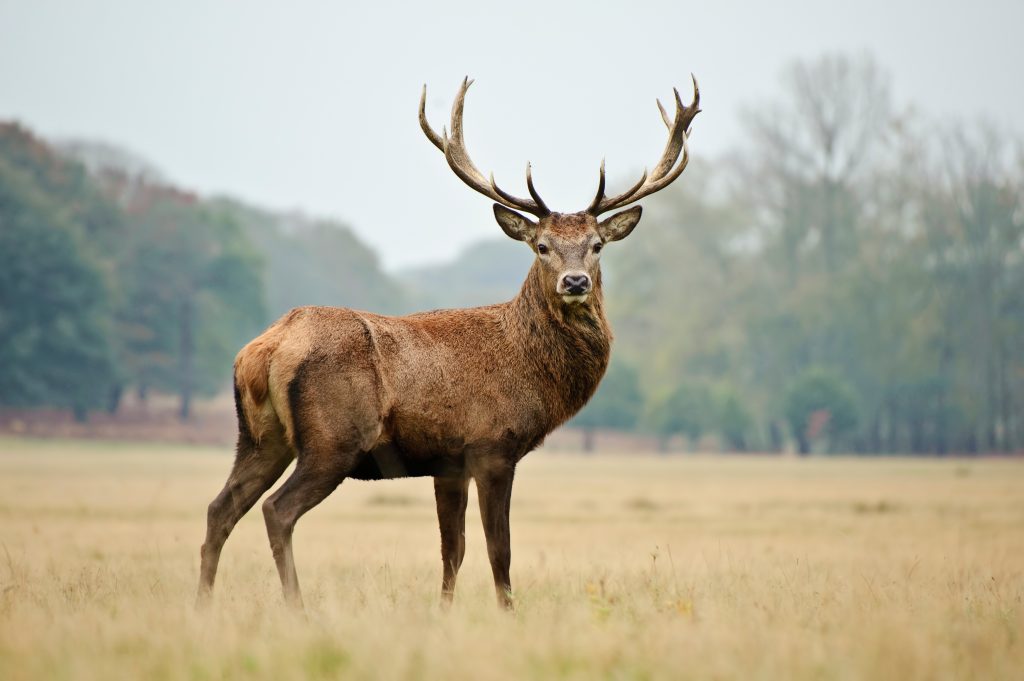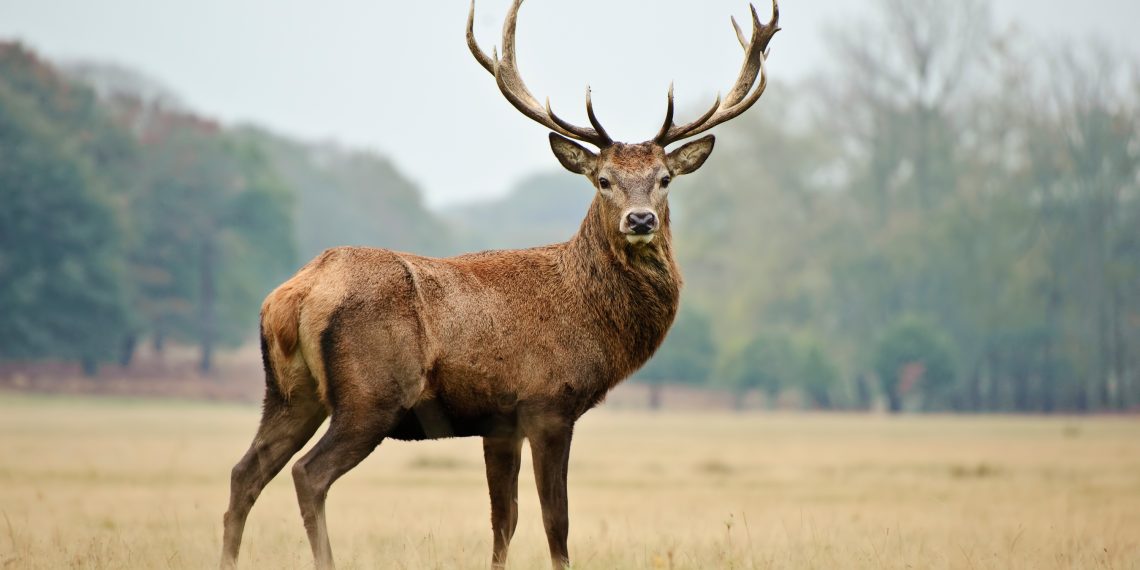
Understanding the sings that animals leave behind in nature provides invaluable clues into their behavior, habits, diet, and health. As one of the most common and widespread species of wildlife in North America, white-tailed deer have coexisted alongside humans for centuries. Their droppings, commonly known as deer poop or deer scat, can reveal a surprising amount of information about them if you know what to look for. This article will provide an in-depth exploratory guide into the appearances, differences, frequency, ecosystem roles, potential health hazards, and hunting clues that deer poop contains.
What Does Deer Poop Look Like?
New deer poop is usually soft, pudding-like, and has an obvious odor. Its color can range from light brown to black, depending on the deer’s diet. Clumps of undigested matter like hair, seeds, or nuts may be visible. As it ages, deer poop loses moisture content and darkens in color. Old deer scat appears dry, rough, and segmented. The odor also dissipates over time.
In general, deer poop resembles the waste of other common herbivores. For example, rabbit poop tends to be rounder and smaller while cow patties are much larger and flatter. Deer poop’s size can vary considerably depending on the size and age of the deer. On average, deer scat is about half an inch to one inch in diameter and up to two inches long. The tapered or acorn shape with a dimple on one end helps distinguish it from other animal droppings.
How to Identify Deer Poop
Several key factors help identify deer feces from other animal waste:
Size and shape: Deer poop is about half an inch to one inch in diameter and one to two inches long, with an acorn shape and tapering on one end. This sets it apart from the waste of smaller animals like raccoons or rabbits.
Color: Fresh deer scat has a soft, pudding-like texture and appears dark brown or black, depending on their diet. Older poop is drier and lighter in color.
Content: Clumps of undigested matter like hair, seeds, nuts, or corn may be visible in deer droppings. The presence of these food items can provide clues into the deer’s diet.
Location: Deer poop is most likely found in wooded areas where deer frequent. Trails, feeding areas, beds, and rubs are prime locations. Large accumulations likely indicate a heavily trafficked deer area.
Here is a visual guide to help identify deer scat:
Are There Differences Between Male and Female Deer Poop?
Research indicates few substantial differences between male and female deer feces. Buck poop tends to be slightly larger on average, likely owing to their larger body size. However, size ranges considerably in both sexes depending on age, health, and genetics. As such, size is an unreliable factor for determining gender from deer droppings alone.
The contents of deer poop offer more insight. Bucks shed their antlers annually, so higher hair content may indicate males marking territories and scraping velvet from their antlers. In contrast, doe poop hair is more likely from self-grooming.
Overall, while subtle differences exist, most experts advise against attempting to distinguish gender from deer scat appearance alone. Too many variables exist, making such distinctions highly speculative without additional context.
Understand What Deer Diet Their Poop Reveals
As herbivores, deer consume a wide variety of plant matter including leaves, twigs, bark, fruits, nuts, grass, corn, and crops. The undigested components of these foods often appear in their poop. Evaluating these contents offers clues into seasonal dietary shifts, favorite foods, nutritional health, and even environmental conditions.
Spring/Summer: Lush and tender grass shoots comprise much of their diet during spring and early summer. Deer scat will be heavy with grass remnants and appear dark green from the chlorophyll. Berries also supplement summer nutrition when available, indicated by small seeds.
Fall/Winter: Woody browse like twigs and bark replace grass as staples during fall and winter when herbaceous plants die back. Scat contains more fibers and appears lighter brown in cooler months. Heavy browsing of twigs may indicate nutritional shortages.
Crop fields: Deer bordering farmlands containing corn, wheat, soybeans, or other crops consume these readily. Undigested bits of crops point to such feeding and, if abundant, suggest crops possibly suffering damage by deer.
Mast crops: Deer track and feed heavily on masting trees and shrubs like oaks, beech, hickories, and apples in the fall when they fruit. The abundance of undigested nuts and seeds in their poop can quantify mast crop size and deer dependence.
Starvation: Struggling deer with poor nutrition cannot digest components like hair and fibers. Undernourished deer commonly have fur and twigs in their droppings indicating possible starvation conditions.
In this way, closely monitoring deer scat provides a detailed look into deer diets, behavior, movements, reproductive cycles, and health on local scales. Changes in poop contents act as barometers for shifts in the deer condition and environment.
Frequency and Quantity of Deer Poop
Understanding deer defecation patterns provides insights into activity levels and population density in the area. Deer poop as often as 13 times daily, producing an average of about 30 pellets per bowel movement. This number varies based on factors like their feeding schedule, digestion efficiency, or health. Well-fed deer digest food faster and poop more; starving deer cannot process food as quickly.
The quantity of accumulated poop also matters. More droppings equal more deer traffic. Numerous small piles suggest a dispersed local population. In contrast, large clustered piles reflect a concentration hotspot with heavy usage. Quantifying pellet groups over time and location can effectively track deer population trends.
For example, 10 pellet groups per acre could indicate approximately 10 deer in the immediate vicinity. If this number doubles year over year, it likely signals rising deer densities, possibly necessitating herd management intervention. Evaluating both frequency and quantity of deer scat thus allows for sophisticated population monitoring and analysis.
The Role of Deer Poop in The Ecosystem
As herbivores, deer occupy an integral role in dispersing seeds and fertilizing habitats across North America. Deer consume vast amounts of vegetation daily, including seeds and nuts from masting trees and shrubs. These undigested seeds germinate readily after being deposited in new locations through poop.
Additionally, deer scat concentrates essential nutrients like nitrogen, phosphorus, potassium, and sulfur derived from consumed plant matter. When left to decompose, this fertilizes soils, creating nutrient hotspots called “piospheres” that boost localized plant growth. Deer piospheres enhance biodiversity, aiding struggling saplings and insect/fungi communities around the enriched soil.
By distributing seeds and fertilizers through their poop across wide-ranging feeding areas, deer help maintain diverse and healthy forest and field habitats for other dependent wildlife. As keystone herbivores, deer – and their poop – thus play integral roles in sustaining ecosystems continent-wide.
Deer Poop and Disease: A Potential Concern?
While useful environmentally, deer poop raises disease concerns if handled improperly. Deer scat may contain parasitic worm larvae or bacteria like E. coli that can infect other deer, livestock, or humans. Diseases may also spread indirectly by deer contaminating food crops with their droppings.
Deer worms: White-tailed deer host stomach worm species like the meningeal worm (Parelaphostrongylus tenuis), muscle worm (Pneumostrongylus tenuis), and nasal bot fly (Cephenemyia sp.) that can be transmitted through poop exposure. Livestock like llamas, alpacas, sheep, and goats are highly susceptible, easily resulting in neurological conditions or death upon infection.
- coli: Deer gastrointestinal tracts host bacteria strains like E. coli O157 which are shed in feces. Livestock or humans ingesting such contaminated water/food sources experience symptoms like nausea, vomiting, cramps, or diarrhea.
Crop contamination: Deer defecating on crop fields while feeding can transmit worms or bacteria to produce like lettuce greens. Human consumption without proper cooking has caused E. coli outbreaks traced back to deer fecal contamination.
While risk is relatively low, proper precautions around deer poop minimize disease transmission. Wearing protective clothing like gloves and masks when handling materials in heavy deer areas can reduce infection likelihood. Cooking contaminated crops and not consuming contaminated water fully protects against deer-borne illnesses. Overall, basic hygienic and cooking standards help avoid most health issues surrounding deer scat.
Deer Hunting: How Deer Poop Can Be A Helpful Indicator
For hunters, deer poop provides a unique advantage in deciphering deer movements, feeding locations, populations, and scouting prime areas. Fresh scat indicates active recent deer presence, especially along game trails where droppings accumulate. Old and weathered deer poop conversely reveals traditional deer hotspots used over seasons. Evaluating deer pellet distribution patterns across the landscape thus helps determine deer habitats and preferences.
Noting signs like rubs and scrapes with accompanying fresh poop suggest territorial buck activity, signaling prime hunting sites for selectively harvesting mature males. Does tend to defecate more frequently when feeding or bedding. Hunters locating deer beds surrounded by numerous pellet groups gain ideal ambush sites for intercepting relaxed, stationary deer.
Furthermore, the physical qualities and dietary contents of deer poop while scouting provide hunters valuable insights into the condition, health, nutrition needs and local food sources targeting the deer. By interpreting this deer intel hidden within deer droppings, hunters can devise effective strategies to pinpoint trophy deer locations, movements, and most active feeding times.
Conclusion
Deer poop certainly holds more intrigue than meets the eye. The significant insights gained by analyzing deer scat appearances, contents, deposits, and context offer a unique window into better understanding and managing North America’s most popular big game animal. Noticing subtle shifts in deer droppings can reveal trends in populations, migrations, breeding patterns, diets, health, and habitats at local scales over seasons.
While strange as it may seem, reading this secret language hidden within deer poop provides both researchers and hunters a critical tool in monitoring and conserving deer and their vast ecosystems continent-wide. Appreciating deer poop ultimately allows us to support the sustained success of these iconic herds along with the many human and wildlife communities that cherish deer.
References
DeNicola, A. J., & Williams, S. C. (2008). Sharpshooting suburban white-tailed deer reduces deer–vehicle collisions. Human-Wildlife Interactions, 2(1), 28-33.
Forest Preserve District of Cook County. (n.d.). Do Deer Droppings Transmit Disease? Retrieved January 4, 2023, from https://fpdcc.com/faqs/natural-resources/do-deer-droppings-transmit-disease/
Kendall, C. J., & Giordano, A. J. (2019). Coprophagy and epidemiology: Deer feces and chronic wasting disease. Human-Wildlife Interactions, 13(3), 322-339.
New York State Department of Environmental Conservation. (n.d.). Hunting Whitetail Deer. Retrieved January 4, 2023, from https://www.dec.ny.gov/outdoor/8313.html
Wallingford, B. D., & Murphy, B. P. (2018). Deer, bears, and seeds: Contributions of white-tailed deer and American black bears to seedling establishment. Oecologia, 188(1), 153-166.







